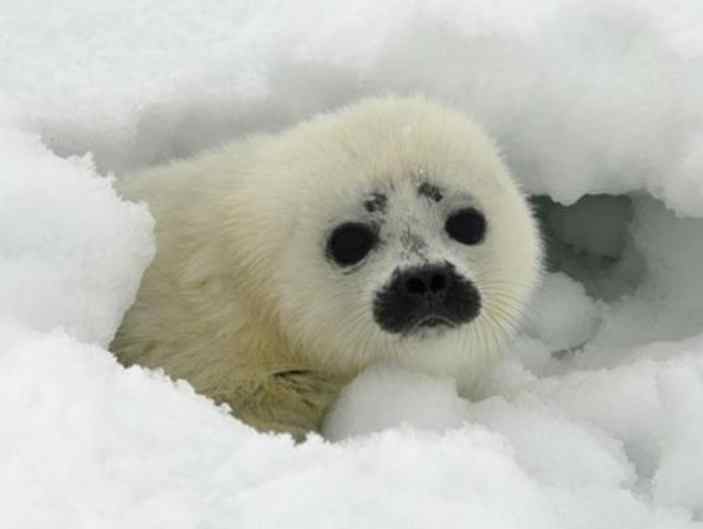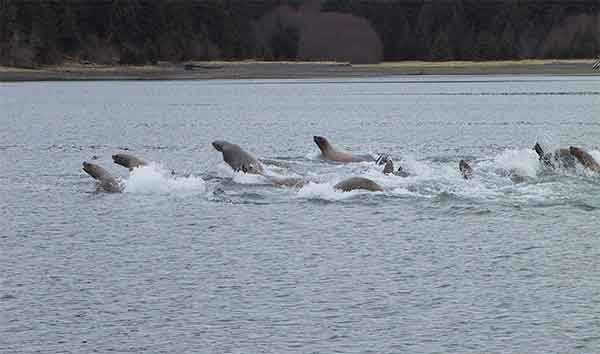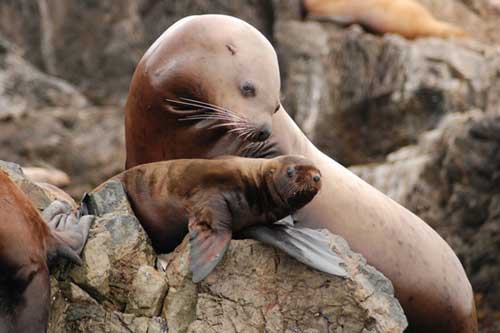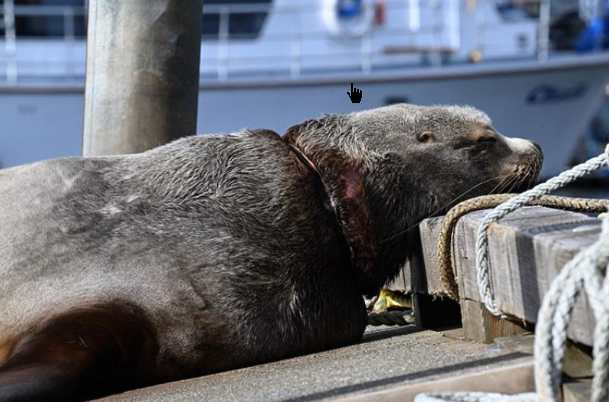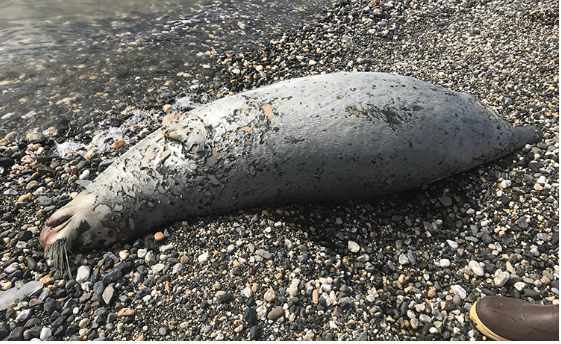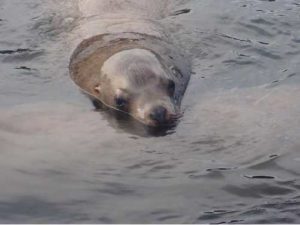
Ugwik – Sea mammal haul out rock
Wiinaq ugwigmi et’uq. – The sea lion is on the haul-out rock.
The literal translation of the Alutiiq word ugwik is ‘a place to climb on top of.’ Speakers use this term to refer to sea mammal rocks, spots where seals and sea lions rest along the shore. This includes rookeries—major breeding locations where hundreds of animals may congregate, and haul outs—resting places for smaller groups. These locations are predictable. Sea lions, for example, prefer to haul out on rocky points along the outer coast and return to the same spots regularly. This makes haulouts a reliable place to find animals.
While the Alutiiq are skilled ocean harvesters, Alutiiq ancestors also stalked sea mammals at haul-out rocks. A pair of hunters would quietly approach a sea lion haul-out by kayak. One hunter would jump to shore, harpoon an animal, and club it to death. The animal’s throat was slit, its stomach filled with air, and the carcass towed home behind the kayak. According to Alutiiq lore, cormorants hang out at sea lion rocks for protection. Because cormorants were often hunted with a net, a technology not used to harvest sea lions, hunters don’t pursue cormorants at sea lion rocks.
Archaeologists suspect that there was once a northern fur seal (Callorhinus ursinus) rookery somewhere near the southern end of Kodiak Island. Until about 300 years ago, the animal remains found in Alutiiq settlements seldom included fur seals. However, very late prehistoric sites in Chiniak Bay, Sitkalidak Island, and Kiavak Bay have large quantities of fur seal bones. Why? The number of fur seal remains, including the bones of fetal and juvenile animals, suggests that Alutiiq ancestors were taking fur seals in the spring, when animals typically congregate to feed and breed. This represents a change in harvesting patterns and perhaps a greater number of animals in Kodiak waters.
Source: Alutiiq Museum


